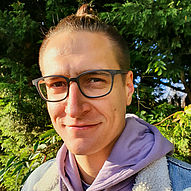
HOME
Welcome to the webpages of our research group.
Our research is focussed on synthetic main-group chemistry and the exploration of novel cooperative reaction modes and applications of low- and high-valent main group systems.
Applications welcome! We are currently looking for new team members. If you would like to join a young and dynamic research group and are interested in or want to learn more about inorganic and organic synthetic chemistry, quantum-chemical calculations, applied spectroscopy (NMR, IR, EPR ...) and single crystal diffractometry we would be very happy to hear from you.
Feel free to send an email to marcel.schorpp[at]ur.de so we can arrange a (video)meeting to discuss further.
Visit us on Instagram: schorpplab
Valence tautomerism and stimuli response
Valence tautomerism, is a phenomenon frequently observed in transition metal chemistry. It often occurs when redox-non-innocent ligand scaffolds allow for electron transfer processes with the central element making it difficult to assign formal oxidation states. In some cases external stimuli may even trigger a transition between different valence tautomers. Although valence tautomerism is not commonly reported in main group compounds, the distinct reactivity of main group elements in low and high oxidation states bears the potential for novel reactivity modes. Our current focus is on exploring the preparation of main-group compounds exhibiting valence tautomerism that can be triggered by stimuli (e.g. Lewis bases, light). We believe that these compounds could have practical applications as chemosensors, photoswitches, or in photocatalysis.
Element-Ligand cooperativity
Element-Ligand cooperativity (ELC) originates from Transition metal chemistry and represents a powerful concept in homogeneous catalysis. ELC involves the activation of the initial substrate across two reactive centers: the nucleophilic ligand backbone and the electrophilic central element. Recently numerous studies have shown that ELC can also be achieved with main-group elements and may enable catalytic transformations of small molecule substrates with molecular main-group systems. By combining ELC with valence tautomerism (see above), the targeted main group compounds should exhibit novel reactivity channels that could enable true catalytic turnover.
Highly fluorinated acceptor materials
The introduction of highly fluorinated and electron-withdrawing ligand environments depletes the electron density of a central element, thereby increasing its acceptor properties. This concept is commonly used to design strong Lewis acids (LA) which find numerous applications in LA-catalysed transformations. Furthermore, LAs are part of so-called frustrated Lewis pairs (FLPs) which themselves find application as metal free catalysts in e.g. hydroelementation reactions. Current research focusses on the preparation of novel highly fluorinated main group compounds with increased acceptor properties for the application in LA and FLP catalysis as well as push-pull systems with enhancement luminescent properties.
Electron-deficient boryl substituents
Boryl substituents have found widespread applications in transition metal complexes as well as main group compounds. Their (formal) anionic charge makes them exceptional σ-donors exceeding isolobal carbenes; however, they have only minor π-accepting abilities. By introducing highly fluorinated and electron-withdrawing substituents, the acceptor properties of the corresponding boryl substituent can be greatly increased, allowing for the modulation of the reactivities of resulting boryl-substituted main group and transition metal species.

